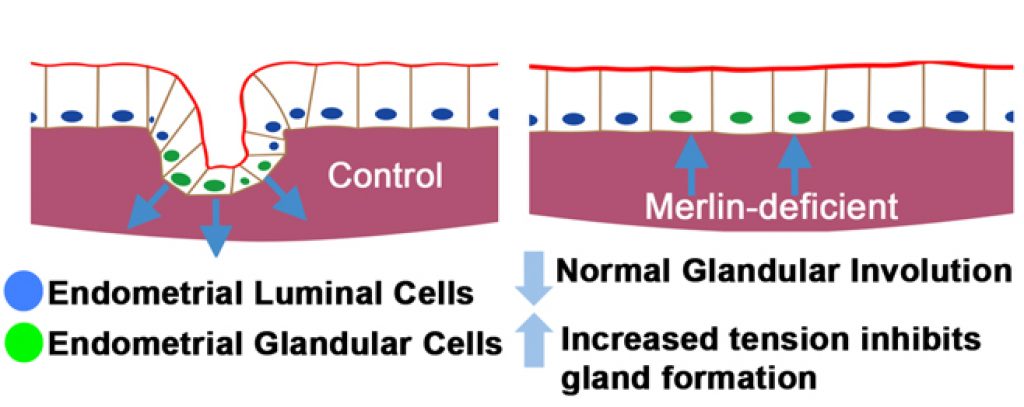Research Interests
- Reproductive tract development
- Endometrial cancer
- Cell polarity in tissue development and disease
- Function of cell adhesion in regulating tumor progression
Research Program
Cells must be able to sense neighboring cells and the surrounding environment to organize into tissues and organs in the mammalian body. How cells sense and communicate with adjacent cells is a fundamental question investigated in the Gladden lab. In particular, we study how cell adhesion and cell polarity are intertwined in normal tissue development and how these pathways are altered in diseases such as cancer. We use a combination of 3D cell culture, mouse models and protein biochemistry to study how cell polarity and adhesion regulate tissue organization. Our work focuses on the interplay between cell adhesion proteins at the adherens junction and cell polarity proteins and how these proteins regulate tissue organization. We concentrate on the epithelium of the endometrium in the female reproductive tract and have shown that proteins of the junctional polarity complex, including the tumor suppressor protein Merlin and the polarity protein Par3, are critical regulators of endometrial gland development and are disrupted in endometrial cancer. We are currently investigating how specific mutations in endometrial epithelial cells promote changes in cell differentiation and organization that lead to neoplasia development.
3D imaging of total endometrial epithelium from wild-type (left) and Merlin-deficient endometrium (right). Arrows indicate involution of glandular cells in wild-type endometrium (left) and no glandular involution in Merlin-deficient.
Summary model for regulation of gland formation by Merlin. Wild-type endometrium (left) have luminal cells that turn on gland specific transcripts (green cells) and the gland undergoes involution in to the stroma to form the functional gland morphology. Merlin-deficient endometrium (right) has initiation of the glandular program but the gland structure cannot form due to increased basal tension resulting in loss of glandular function.
List of publications from PubMed




